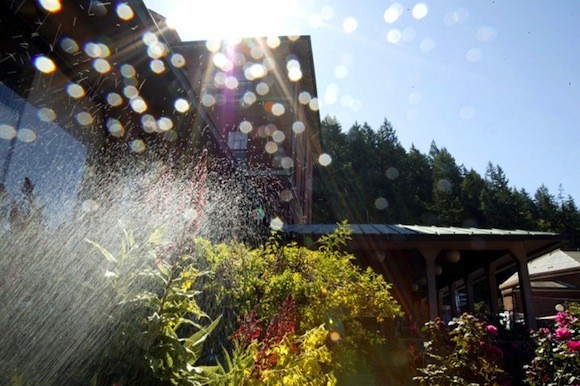 By Paul McLaughlin, Ballaghdearg Garden Centre
By Paul McLaughlin, Ballaghdearg Garden Centre
Strange as it may seem, given the amount of rainfall we get in Donegal each year, one of the most common causes of plant death in this area is a lack of water.
Given the current dry spell and the fact that our climate is constantly changing to give us dryer, hotter summers this problem is only going to get worse.
Plants suffering the effects of drought will usually begin to look tired and their leaves will wilt and become limp.
If the lack of water persists then the leaves will turn yellow then brown at the edges and eventually fall off. The effect of drought on plants can vary between different types and can also depend on its severity of the water shortage, but most plants will attempt to tell the gardener when drought sets in by showing at least some of these symptoms.
When a plant is suffering from a lack of water it usually stops growing as it has to put all its efforts into just staying alive.
As the situation worsens its flowers and leaves will shrivel up, its fruit drops off and ultimately the plant will wither away and die.
When looking for signs of drought it is good to remember that drought tends to affect plants from the top down or from the outside inwards. It is also an unfortunate fact that many of the symptoms of drought are quite similar to symptoms of over watering, which can also be fatal to plants.
Nevertheless it is as easy as dipping your finger in the soil to check which of the problems is at work in your case.
When watering your plants it is vitally important to use the right amount to help your plants through prolonged dry periods. In dry conditions plants should be watered at least once a day preferably in the early morning or in the evening, as watering when the day has cooled off helps to reduces evaporation and in extreme cases scorching.
However, if you find that a plant looks like it is wilting and suffering from the effects of drought during the day then don’t wait and water it immediately. It is important to remember that if you have an automatic watering system on a timer, to adjust it to take weather conditions into considerations.
It also pays to remember that it is not just the sun that causes soil to dry out but also windy conditions.
If you find that you don’t have the time to be watering regularly you can take measures to help conserve the water around your plants and especially in hanging baskets and containers. Mulches such as bark chippings or gravel can be added to the surface of borders or pots.
These mulches work by reducing evaporation and by trapping moisture in the soil. To help keep pots and containers moist water-retentive gel can also be added to the compost. To keep pots moist you can also take the practical step of moving container plants into shaded areas during particularly warm weather to help conserve their water supply.
If you find that you have a predominantly dry garden you can reduce your workload by choosing plants that suit such conditions. Plants that like dry conditions often have grey or silver foliage. Plants with thin foliage are also popular in dry conditions as the amount of water exiting via the leaves is greatly reduced.
Tags:







